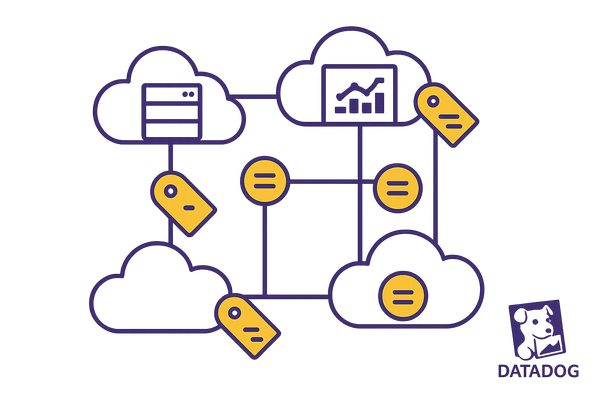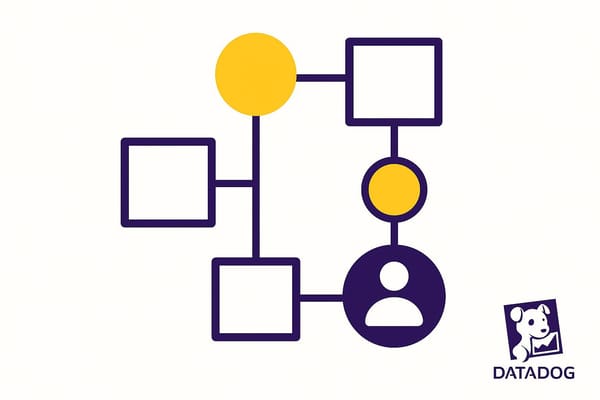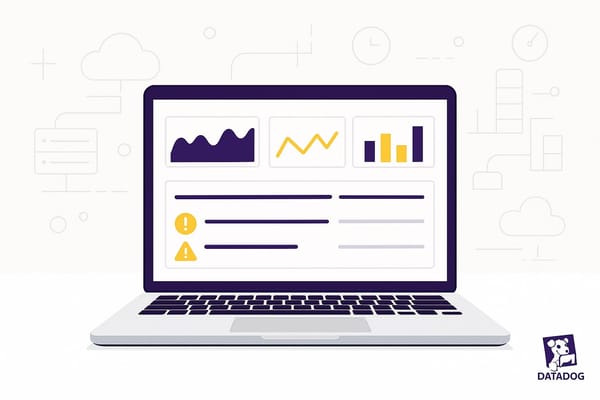Datadog vs Dynatrace: Why Modern Teams Choose Datadog for Cloud Observability
Explore how a unified monitoring platform enhances cloud observability for modern teams, emphasizing ease of integration and cost-effectiveness.
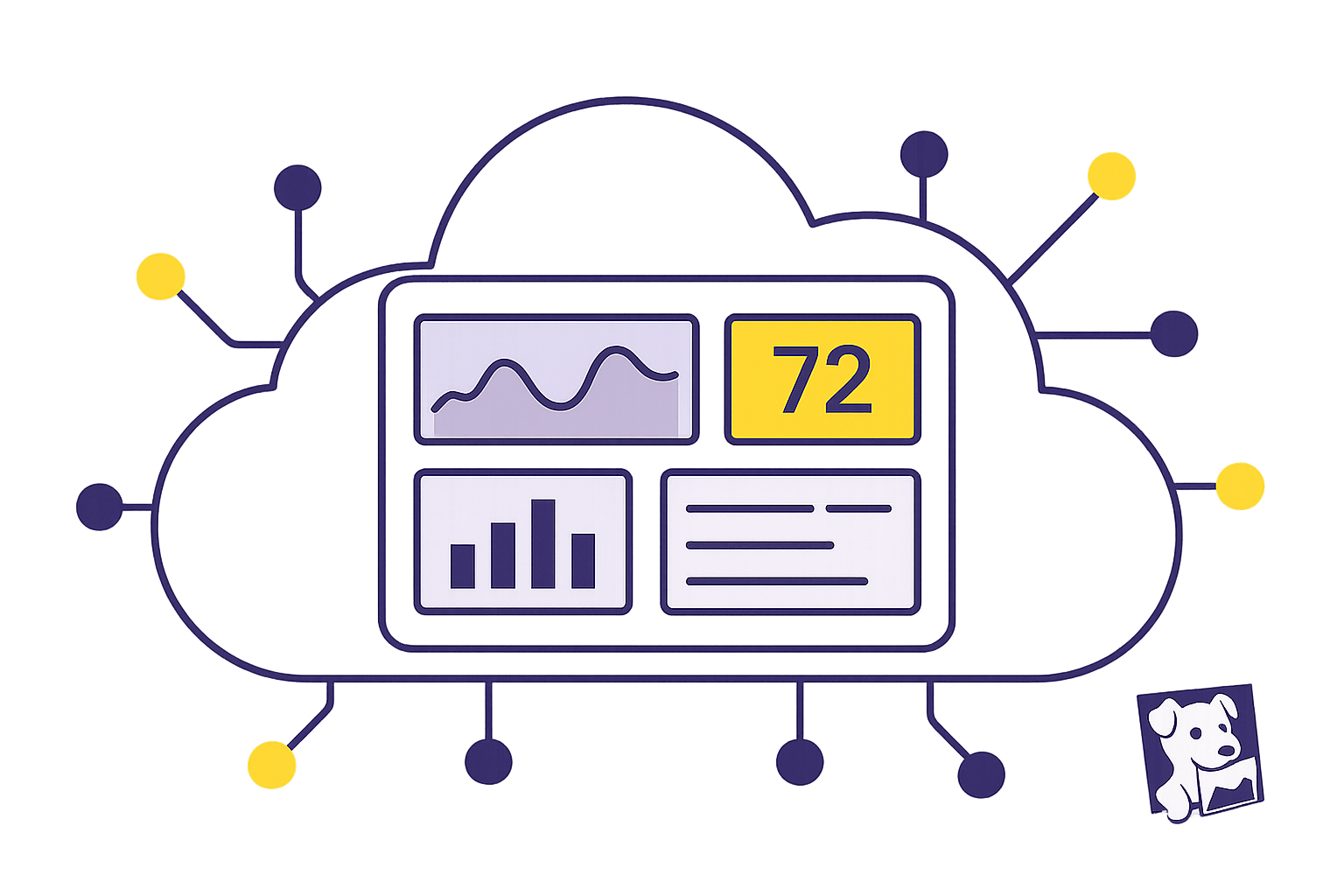
Looking for a cloud monitoring tool that simplifies observability? Datadog is a top choice for modern teams. Here's why:
- Unified Platform: Combines infrastructure monitoring, APM, logs, and security in one place.
- Cloud-Native Features: Tailored for Kubernetes, serverless apps, and multi-cloud setups.
- 850+ Integrations: Seamlessly connects with popular tools and services.
- AI-Powered Insights: Detects anomalies, pinpoints root causes, and automates fixes.
- Cost-Effective: Flexible, modular pricing designed for SMBs to scale efficiently.
Quick Comparison
| Feature | Datadog | Dynatrace |
|---|---|---|
| Platform Coverage | Unified monitoring for infra, APM, logs, and security | Primarily focused on APM and infra |
| Cloud-Native Support | Kubernetes, serverless, multi-cloud | Limited serverless support |
| Integrations | 850+ | Fewer integrations |
| AI & Automation | Watchdog AI, Bits AI assistant | AI capabilities exist but less modular |
| Pricing | Modular, pay-as-you-go options | Higher upfront costs |
Datadog stands out for its simplicity, flexibility, and ability to handle modern cloud environments. Ideal for teams seeking real-time insights, collaboration tools, and cost control.
Datadog vs Dynatrace - Which Is Better? (A Detailed Comparison)
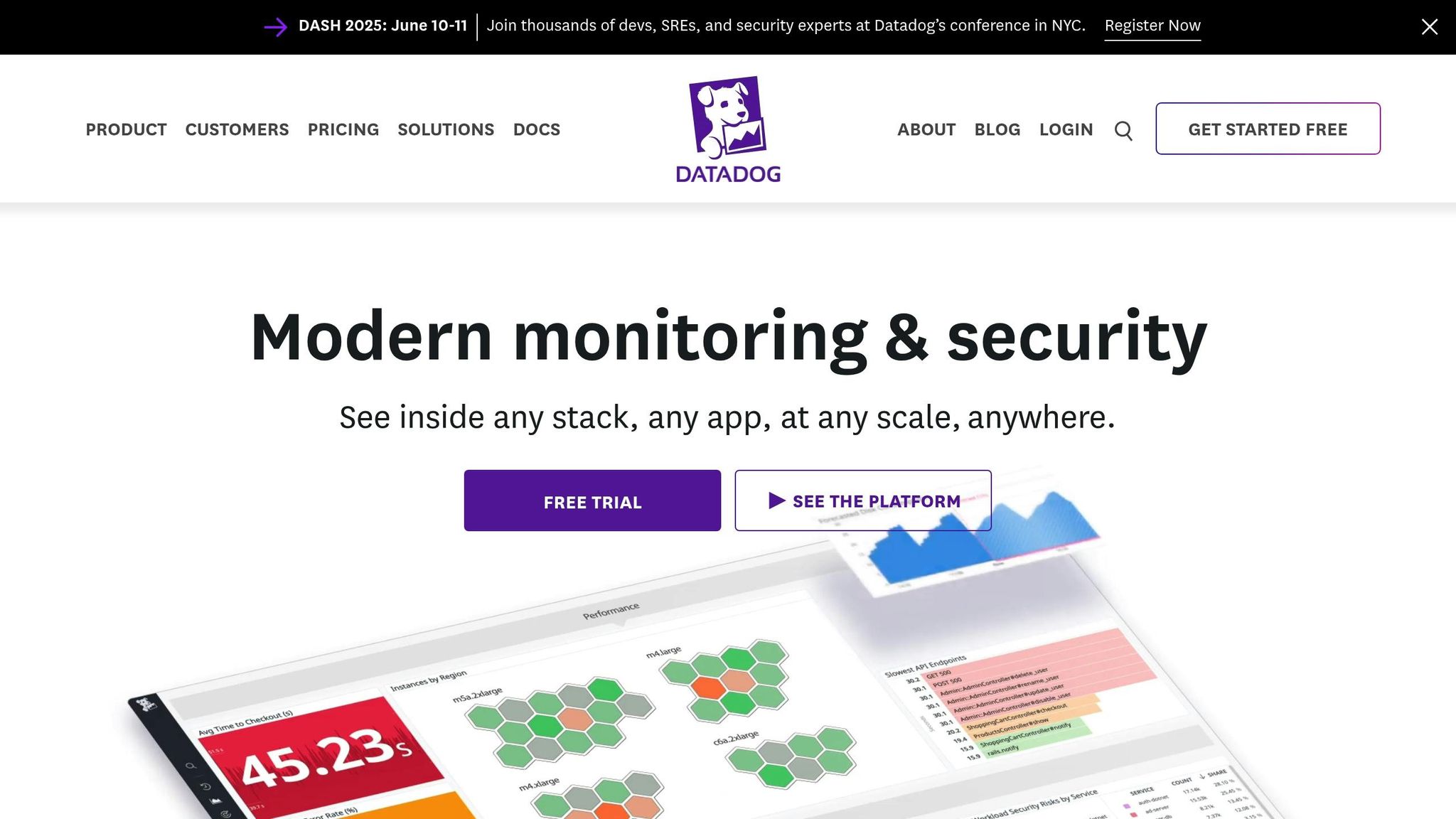
Core Monitoring Features
Datadog's monitoring tools are at the heart of achieving effective cloud observability.
All-in-One Monitoring Platform
Datadog brings together infrastructure monitoring, application performance monitoring (APM), logs, and security data into a single platform. This eliminates the need to juggle multiple tools, making it easier to maintain a clear and consistent view of your systems' performance.
| Feature | What It Offers |
|---|---|
| Centralized Data | A single, reliable source for all monitoring data |
| Integrated Dashboards | Unified visibility across metrics, traces, and logs |
| Centralized Alerts | Streamlined alert management for all monitoring types |
| Unified Reporting | Consistent reporting across infrastructure and applications |
By consolidating these features, Datadog creates a strong foundation for delivering real-time insights through its analytics tools.
Live Analytics and Metrics
Datadog provides instant insights into cloud performance, enabling teams to act quickly. Its monitoring features are designed to deliver actionable data:
- Infrastructure Metrics: Tracks a broad range of system performance indicators to ensure smooth operations.
- Security Monitoring: Offers real-time threat detection and compliance checks to safeguard your systems.
This steady flow of real-time data powers Datadog's advanced monitoring capabilities, keeping teams informed and prepared.
Cloud-Native Monitoring Tools
Datadog is built to support cloud-native architectures with tailored monitoring tools. With over 850 vendor-backed integrations and recognition as a Leader in key industry reports, Datadog demonstrates its expertise in managing modern cloud environments.
Key features for cloud-native monitoring include:
- Container Environment Support: Advanced tools for monitoring Kubernetes and containerized environments.
- Serverless Application Tracking: Specialized monitoring for serverless functions to ensure seamless performance.
- Host and Container Maps: Visual tools that map out infrastructure relationships for better understanding.
- Synchronized Dashboards: Real-time updates across all monitoring views for a consistent, up-to-date perspective.
These tools provide a complete view of modern cloud infrastructures, helping teams maintain high performance and quickly address any emerging issues.
User Interface and Dashboards
Datadog's updated interface is designed to provide quick and easy access to essential monitoring tools. This refreshed layout supports Datadog's commitment to integrated monitoring, solidifying its position as a leader in cloud observability.
Streamlined Dashboard Creation
The platform's visual editor simplifies the process of building dashboards. A well-organized sidebar categorizes over 20 products and 850+ integrations, making it easy to navigate and find the tools you need.
| Dashboard Feature | Benefit |
|---|---|
| Search Bar | Quickly locate recent pages and tools |
| Product Categories | Sidebar organized to align with typical workflows |
| Watchdog Integration | Direct access to automated monitoring insights |
| Bits AI Assistant | Conversational tool for uncovering insights across the platform |
| Enhanced Contrast | Optimized color schemes for better readability and usability |
This emphasis on visual clarity ensures that users can maintain efficient workflows, even during high-pressure monitoring scenarios.
Alerts and Team Collaboration Tools
Datadog Teams enhances collaboration and simplifies alert management, helping organizations respond to incidents more effectively and streamline daily operations.
"Bringing teams together has always been Datadog's core mission. Adding CoScreen's real-time communication capabilities helps our customers bring distributed teams closer together and move forward with in-product collaboration. The end result is higher developer productivity, faster incident response and reduced mean time to resolution."
– Ilan Rabinovitch, Senior Vice President of Product and Community at Datadog
Here are some key features that support teamwork and incident management:
- Resource Organization: Clearly defines ownership and the scope of monitored resources, enhancing accountability and speeding up response times.
- Curated Views: Customizable dashboards provide immediate access to relevant data, cutting down on alert fatigue.
- Service Catalog Integration: Offers a centralized inventory of services and their dependencies, making troubleshooting and maintenance faster and more efficient.
- Real-time Collaboration: CoScreen integration allows engineers to share screens and work together seamlessly during incidents, debugging, or security responses.
These collaboration tools are especially beneficial for small and medium-sized businesses (SMBs), where effective communication and resource management are critical to maintaining smooth cloud operations. By fostering teamwork and clarity, Datadog ensures that organizations can handle challenges with confidence.
Third-Party Tool Support
Datadog offers over 850 integrations, making it simple for SMBs to connect their entire technology stack without hassle.
Ready-Made Connections
Datadog's integrations provide instant visibility into various tools, removing the need for complicated custom setups. Teams can dive into monitoring right away, saving time and effort.
| Integration Category | Key Features | Benefits |
|---|---|---|
| Cloud Services | Auto-discovery, metrics collection, log aggregation | Real-time insights into cloud resources |
| Development Tools | CI/CD pipeline monitoring, code profiling | Comprehensive development lifecycle insights |
| Communication | Alert routing, incident management | Better team coordination |
| Deployment | Kubernetes, OpenShift, Terraform support | Simplified configuration management |
These integrations form a scalable monitoring system that automatically detects new resources, ensuring consistent infrastructure oversight. This ease of integration highlights Datadog's focus on simplifying observability for users.
Multi-Cloud Environment Support
Datadog doesn't just stop at integrations - it also makes managing multiple cloud environments far easier. Its platform-agnostic design provides a single interface to oversee hybrid infrastructures, a key feature for SMBs juggling diverse setups.
"Datadog helps us solve the pain point of observing a large hybrid cloud platform. It allows a single point of focus for our team to look at, adjust, and monitor our entire estate." - Joe Humphries, Infrastructure Director, MyLife Digital
Key multi-cloud features include:
- Cross-Platform Visibility: The Service Map visualizes how databases, APIs, and containers interact across different cloud providers and on-premise systems.
- Automated Resource Discovery: New resources are automatically detected and monitored as they're deployed, ensuring no gaps in visibility.
- Unified Data Collection: Metrics, logs, and traces from various sources are aggregated into one place, providing a complete picture of infrastructure performance.
For example, MercadoLibre used Datadog to quickly identify and resolve issues while uncovering deeper root causes. This functionality is especially useful for SMBs aiming to maintain comprehensive oversight across multiple cloud services without juggling numerous tools.
SMB Cost Analysis
For small and medium-sized businesses (SMBs), having clear and predictable pricing is just as important as effective monitoring tools. Datadog provides a modular pricing model that simplifies both expense forecasting and cost management. Its host-based and feature-specific pricing options allow businesses to pay only for what they actually use.
Clear Pricing Structure
Here’s a snapshot of Datadog’s pricing for key monitoring services:
| Monitoring Type | Base Price | Annual Commitment Savings |
|---|---|---|
| Infrastructure Pro | $15/host/month | Save 17% compared to on-demand |
| APM | $31/host/month | Save 14% compared to on-demand |
| Database | $70/host/month | - |
| Log Management | $0.10/GB | - |
Datadog’s flexibility extends further with additional options:
- Custom metrics: $1 per 100 metrics per month
- Container monitoring: $0.002 per container per hour
- Log management: $0.10 per ingested GB
This modular setup ensures SMBs can tailor their spending to match their actual needs, avoiding unnecessary costs.
Growth-Friendly Pricing
Datadog’s pricing structure is designed to grow alongside your business, helping you manage costs effectively. By opting for committed-use pricing, companies can save up to 50% compared to on-demand rates. This makes it particularly appealing for SMBs looking to optimize their observability budgets.
Here are some strategies to keep costs in check:
-
Usage Optimization: Use Datadog’s cost monitoring tools to track daily spending and identify inefficiencies. For example:
- Turn off debug logs in production environments.
- Remove unused custom metrics.
- Ensure synthetic tests are actively maintained.
- Role-Based Access: Assign Datadog product access based on user roles to avoid unnecessary user-based pricing increases.
-
Strategic Commitment Planning: Commit to annual plans to cut costs. For instance:
- Infrastructure Pro: $15/host/month (annual) vs. $18/host/month (on-demand).
- Enterprise Tier: $23/host/month (annual) vs. $27/host/month (on-demand).
- Custom events: $2 per 100,000 events (annual) vs. $3 on-demand.
AI Features and Automation
Datadog takes its core strengths in monitoring and cost management to the next level with AI-driven automation. These tools streamline cloud monitoring and incident response, cutting down manual work and helping to keep systems running smoothly.
AI Problem Detection
At the heart of Datadog’s AI capabilities is the Watchdog AI engine, which sifts through billions of data points across your infrastructure. Its job? To spot anomalies and potential problems before they disrupt your operations.
Another standout feature is Bits AI, a generative AI-powered DevOps assistant that provides advanced analysis. Here's a quick breakdown of its key functionalities:
| Feature | Capability | Business Impact |
|---|---|---|
| Anomaly Detection | Identifies performance irregularities | Improves early warning systems |
| Root Cause Analysis | Pinpoints root causes across services | Speeds up issue diagnosis and resolution |
| Contextual Insights | Provides insights into dependencies | Enables faster, smarter decision-making |
"Watchdog helps our teams focus on the signals that matter by surfacing events that typically aren't caught by traditional monitors. Looking at Watchdog every morning helps me gain a better understanding of everything happening across our entire technology stack." - Brent Montague, Site Reliability Architect, Cvent
Automated Issue Fixes
Finding a problem is only the first step - fixing it quickly is just as crucial. Datadog’s Workflow Automation system steps in here, offering over 300 actions and 40+ templates to handle incidents efficiently.
When performance issues arise, Bits AI steps up with capabilities like:
- Analyzing service dependencies during performance degradation
- Triggering automated fixes, such as blocking malicious IP addresses
- Providing code-level insights to directly address errors
For security concerns, automated responses can immediately disable suspicious accounts and notify the appropriate teams.
"Manual processes and context switching often prolong IT downtime. This impacts both a company's bottom line and its reputation with end users." - Michael Gerstenhaber, VP of Product at Datadog
Conclusion
Datadog offers a powerful solution for cloud observability, combining extensive integrations with a unified platform to streamline operations. This approach is backed by real-world examples, such as Business Insider's success story. Eric Saam, VP of Engineering, highlights the impact of Datadog's unified DevSecOps strategy:
"Datadog's unified DevSecOps approach has improved our ability to manage risks, prioritize responses, and remediate issues. As a result, we've been able to reduce tool sprawl and foster a culture of shared security ownership throughout the organization".
For small and medium-sized businesses (SMBs), Datadog provides key advantages:
| Aspect | Benefit | Impact |
|---|---|---|
| Implementation Speed | Quick setup and configuration | Teams can deploy monitoring in days rather than weeks |
| Learning Curve | Intuitive interface and resources | Reduces training time, enabling faster adoption by teams |
| Cost Structure | Flexible "Pay As You Go" pricing | Allows better control over budgets and scalability |
| Integration Ecosystem | Wide range of vendor-backed options | Ensures smooth connections with existing tools and workflows |
Datadog's capabilities continue to evolve, offering real-time insights, user-friendly dashboards, and automated responses. These features, paired with AI-powered tools, comprehensive security monitoring, and straightforward infrastructure management, position Datadog as a go-to solution for SMBs aiming to grow while maintaining operational efficiency.
FAQs
How does Datadog's flexible pricing model help small and medium-sized businesses control costs effectively?
Datadog's modular pricing model offers small and medium-sized businesses (SMBs) a practical way to pay only for the tools they actually need. Instead of forcing businesses into expensive, all-inclusive packages, Datadog lets teams pick and choose specific features like infrastructure monitoring, log management, or application performance monitoring to suit their individual needs.
This setup helps SMBs keep their budgets in check by avoiding unnecessary costs. Plus, as these businesses expand, they can seamlessly add more features or scale their usage without disrupting their current setup. It's a smart way to stay cost-efficient while accommodating growth.
What makes Datadog ideal for monitoring cloud-native environments like Kubernetes and serverless applications?
Datadog offers a powerful way to gain full visibility into cloud-native environments, including Kubernetes and serverless setups. By combining metrics, logs, traces, and security data into one platform, it simplifies the process of monitoring and troubleshooting even the most complex systems.
With fully customizable dashboards, you can view Kubernetes data alongside other critical metrics. Plus, tools powered by machine learning, such as anomaly detection and forecasting, provide insights that help you take action quickly. Datadog also supports Kubernetes Autoscaling, making workload scaling easier with smart recommendations and automation. Its capability to automatically detect services running in Kubernetes clusters ensures you can monitor your infrastructure seamlessly and in real time.
How do Datadog's AI and automation features improve incident response and system monitoring?
Datadog's AI-driven tools and automation features simplify incident response and system monitoring by detecting performance issues as they happen. They bring together related data to help teams quickly uncover the root causes. By connecting alerts across different systems, these tools cut through the noise, allowing teams to focus on the most critical issues.
Automation takes this a step further by handling tasks like triggering workflows or resolving recurring problems automatically - no manual input required. This means teams can react faster, keep systems running smoothly, and enhance reliability, all while cutting down on operational workload.


